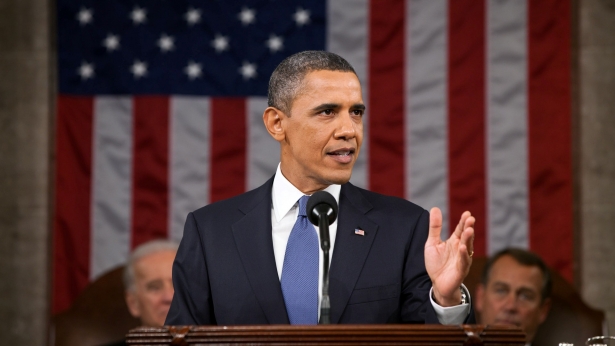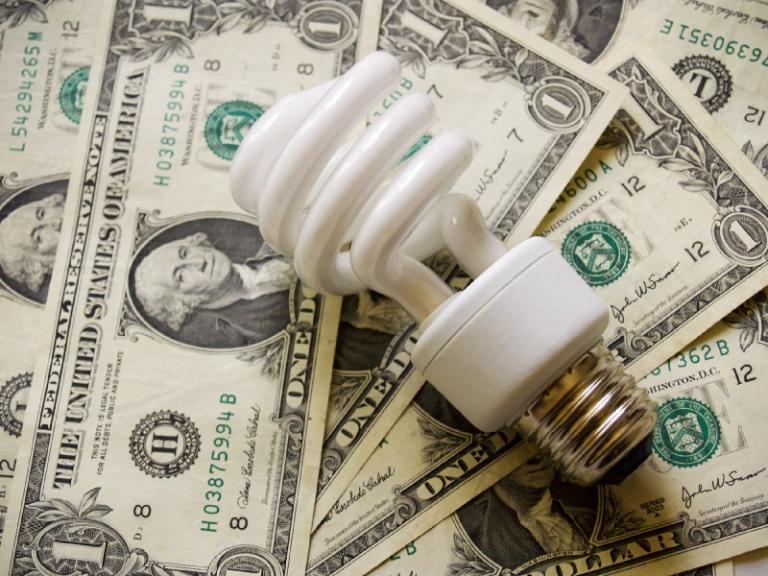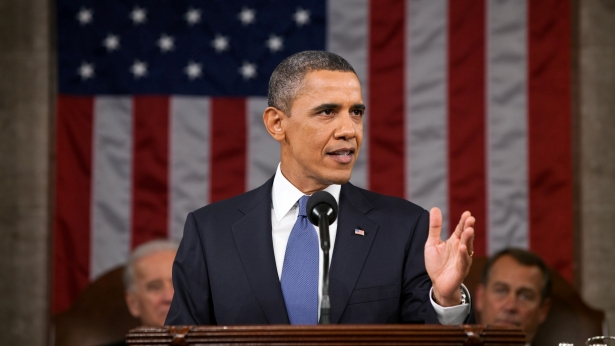 Al Gore’s essay about climate change in Rolling Stone last week was mostly about how the news media have utterly failed to be an effective referee of the phony debate over science, but most of the attention it generated (predictably) focused on his criticisms of President Obama’s handling of climate policy. Gore encapsulated the conventional wisdom: Obama failed to use his bully pulpit to educate the public about climate change, failed to deliver comprehensive clean energy and climate legislation, and failed to deliver a strong international agreement in Copenhagen.
Al Gore’s essay about climate change in Rolling Stone last week was mostly about how the news media have utterly failed to be an effective referee of the phony debate over science, but most of the attention it generated (predictably) focused on his criticisms of President Obama’s handling of climate policy. Gore encapsulated the conventional wisdom: Obama failed to use his bully pulpit to educate the public about climate change, failed to deliver comprehensive clean energy and climate legislation, and failed to deliver a strong international agreement in Copenhagen.
True enough, but it’s not the end of the story. Neither the fate of climate legislation nor Copenhagen was entirely within the president’s control. No doubt Obama could have done more to push the Senate and the international negotiations, but whether that would have changed the outcomes is impossible to determine.
On the other hand, Obama stood up to House Republicans and some Democrats to successfully defend the EPA’s authority to regulate global warming pollution in the April budget deal to fund the government through the end of this fiscal year. The Supreme Court has reiterated that it is the EPA’s job to set standards to limit heat-trapping pollutants. And the president’s chief of staff, Bill Daley, recently reiterated the administration’s determination to veto any legislation that would undermine the EPA’s ability to protect public health.
Now the question is what the Obama administration will do with its authority. The administration is currently developing standards addressing the two biggest sources of global warming pollution: power plants and cars. Together these standards address about 60 percent of U.S. CO2 emissions and they have the potential to reduce overall U.S. emissions significantly. Both of these standards (for power plants under Section 111 of the Clean Air Act, and for passenger vehicles under Section 202) are being drafted right now and will be proposed in September and finalized next spring.
When it comes to reducing emissions from power plants and automobiles using the Clean Air Act, the president is master of his own (and our) fate. The climate legacy of his first term can still be very positive if he delivers strong standards and defends them.
Recent reports about the administration’s proposal for vehicle standards, which will increase the fuel efficiency and reduce heat-trapping pollution from model year 2017-2025 vehicles, make my colleague, Roland Hwang, cautiously optimistic that the final rule will continue the significant progress currently being made by the automobile industry and bring the average fuel economy of new cars close to 60 miles per gallon by 2025.
No details have been reported about the administration’s approach to the power plant rule, but during his State of the Union Address this year the president called on Congress to pass a “clean energy standard” to ensure that at least 80 percent of America’s electricity will come from low carbon sources by 2035. There is no evidence that this Congress will heed that call. Fortunately, power plant pollution standards under the Clean Air Act can set us on a path toward that goal, and all Congress has to do is stay out of the way. As with automobiles, the power plant standards simply need to continue the progress we have seen over the last few years: Between 2005 and 2010 emissions from the electric sector declined by 6 percent (this is not primarily due to the recession — GDP is 5 percent higher than it was in 2005 and total electricity generation is 2 percent higher).
Here’s the bottom line: The jury is still out on President Obama’s climate record. The verdict depends on the power plant and automobile standards the administration is writing now.



